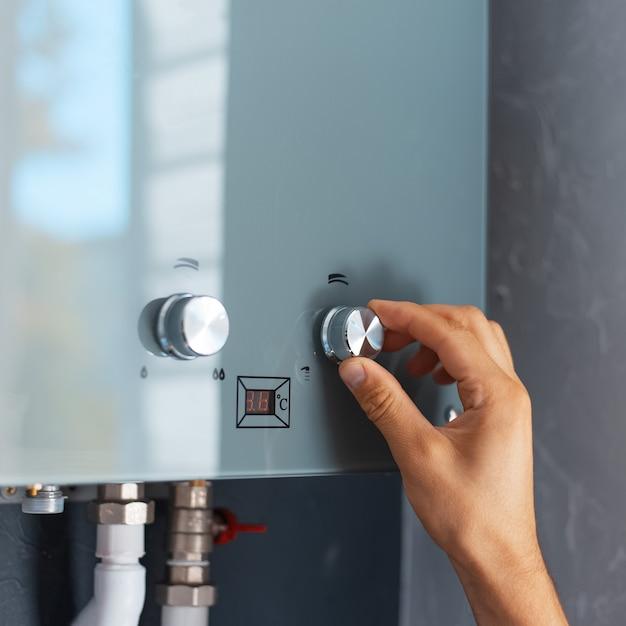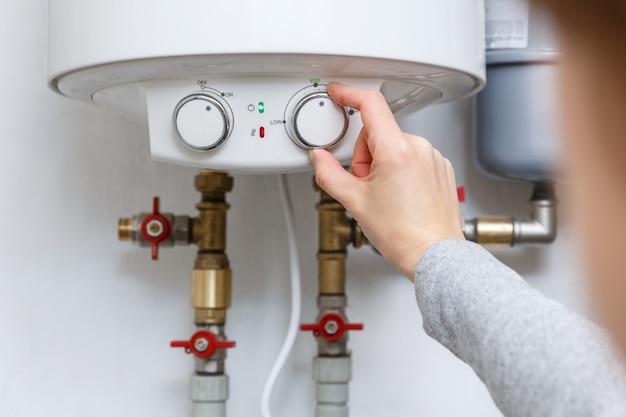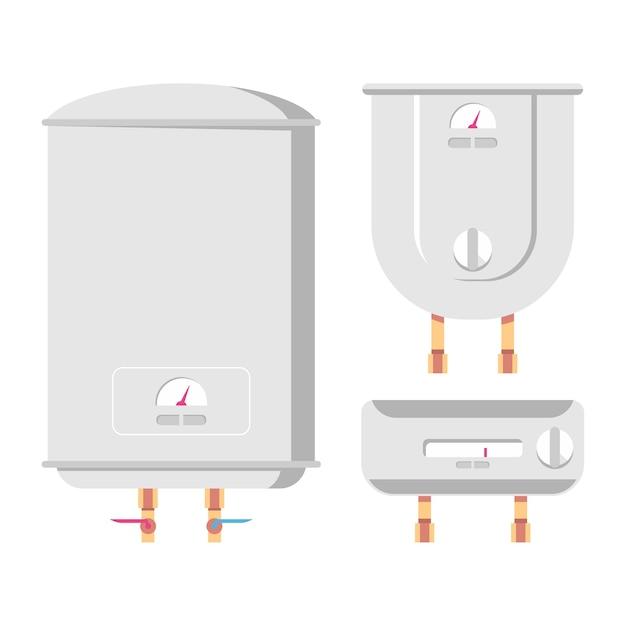If you’ve noticed that the drip pan under your water heater is full, you might be wondering what could be causing the issue. A water heater drip pan is designed to catch any leaks or overflow from the unit, preventing water damage in your home. But if the drip pan is consistently full, it could indicate a larger problem that needs to be addressed. In this blog post, we’ll explore the possible reasons for a full water heater drip pan and discuss whether having a drip pan under a water heater is necessary. So let’s dive in and find out what might be causing this common issue!
Water Heater Drip Pan Full: A Disaster Waiting to Happen
Has your water heater drip pan become a miniature swimming pool? Are you worried about the potential disaster lurking beneath its surface? Don’t fret, my friend! In this section, we’ll dive into the topic of a water heater drip pan that’s just begging for some attention. We’ll explore the reasons behind a full drip pan, the potential consequences, and most importantly, how to tackle this watery situation head-on.
Why is my water heater drip pan suddenly playing Cupid’s Pool
Discovering a water heater drip pan filled to the brim can make even the calmest homeowner break into a sweat. But fear not! There are a few likely culprits behind this unexpected aquatic display:
1. Overflows Happen:
Your water heater could be experiencing overflow due to a variety of factors. Maybe the pressure relief valve is misbehaving or a faulty thermostat is causing your water heater to heat above its limits. Whatever the case, your drip pan becomes the receiver of all that excess water.
2. Drain Pipe Dilemmas:
If your water heater’s drain pipe is obstructed or improperly installed, it’ll send water cascading into the drip pan. A drain pipe that’s gone rogue is not only a nuisance but can also lead to significant water damage.
3. Leaky Connections:
Loose or faulty connections around the water heater can cause leaks that will make your drip pan feel like it’s auditioning for the role of Noah’s Ark. Keep an eye out for any suspicious drips or puddles around your water heater.
The Nightmare Scenario: Consequences of a Full Water Heater Drip Pan
If left unattended, a water heater drip pan that looks like a personal pool party can quickly turn into a homeowner’s worst nightmare. Here’s what could happen if you ignore the signs:
– Water Damage Galore:
A neglected drip pan can overflow, damaging your floor, walls, and anything else in its soggy path. Trust me, drying the entire Sahara Desert might be easier than dealing with the aftermath of severe water damage.
– Moldy Mess:
Moisture creates the perfect breeding ground for mold and mildew. Not only will these unwelcome guests ruin your home’s aesthetics, but they can also pose health risks for you and your family.
Fear Not! Solutions to the Drippy Dilemma
Now that we’ve dipped our toes into the world of water heater drip pans, let’s explore some solutions to drain the excess water and avoid future catastrophes:
– Tackle the Root Cause:
Identify the underlying issue causing the water to overflow, whether it’s a faulty valve, a malfunctioning thermostat, or a leaky connection. Fixing the root cause will prevent your drip pan from feeling like a water park.
– Unblock the Drain Pipe:
If a clogged drain pipe is to blame, the solution might be as simple as removing debris or fixing an improperly installed pipe. Clearing the way for water flow will keep your drip pan water-free.
– Regular Maintenance:
Giving your water heater some tender loving care will go a long way in preventing future leaky situations. Schedule annual inspections, check for potential issues, and perform necessary maintenance tasks to keep your drip pan dry as a bone.
So, dear homeowner, don’t let a full water heater drip pan dampen your spirits. By understanding the causes, consequences, and potential fixes for this drippy dilemma, you’ll be well-equipped to tackle any watery surprises that come your way. Embrace the adventure, roll up those sleeves, and bid adieu to that overzealous drip pan. Your dry floors and peace of mind will thank you!
Why is My Water Heater Drain Pan Full
Imagine this: You’re having a perfectly normal day, when suddenly you stumble upon a puddle of water near your water heater. Oh no, not another unexpected bill! you think to yourself. So, you bend down and take a closer look, only to discover that the culprit behind this watery mess is none other than your water heater’s drain pan overflowing! But why, oh why, is it happening? Let’s dive into the curious case of the drip pan overflow and find out!
Water Heater Woes and Overflowing Pans
The Sneaky Leak
The first thing you need to know is that water heaters have a sneaky way of leaking. Just like that annoying faucet that drips in the middle of the night, your water heater can also develop tiny leaks over time. These leaks usually go unnoticed until they make their presence known through a full drip pan.
The Dreaded Pressure Relief Valve
Ah, the pressure relief valve, the hero and the villain of our story. This little contraption is designed to release excess pressure from your water heater, preventing it from turning into a steam-powered rocket. However, sometimes this valve can become faulty and start releasing water unnecessarily, leading to a full drip pan situation.
Aging Water Heaters and Their Mischievous Ways
Sediment Build-Up
As water heaters age, they tend to accumulate sediment at the bottom of the tank. This sediment is made up of minerals and other goodies that come along for the ride with your water supply. Over time, this sediment can build up and cause all sorts of trouble, including clogging the drain valve. When the drain valve is blocked, the water has nowhere to escape, resulting in a full drip pan.
It’s Time for a Check-Up, Mr. Water Heater
Just like humans, water heaters also need regular check-ups. If your water heater hasn’t been inspected in a while, it might be feeling a bit neglected. An old or faulty drain valve, loose connections, or even a malfunctioning float switch (the water level sensor in the drip pan) can all contribute to an overflowing pan. So, give your water heater some love and get it checked out to ensure it’s in top-notch condition.
Act Fast, Or Prepare for the Flood
Stopping the Drip and Mopping It Up
If your water heater’s drip pan is starting to resemble a miniature swimming pool, it’s time to take action. Start by turning off the power supply to your water heater, either at the circuit breaker or the dedicated power switch. Once the power is off, you can carefully remove any excess water from the pan using a towel or a sponge. Just make sure you don’t electrocute yourself! Safety first, my friend.
Seeking Professional Help
If you’ve tried to troubleshoot the issue yourself but the overflowing pan is still causing waves of frustration, it’s best to call in the professionals. A qualified plumber or technician can investigate the root cause of the problem, whether it’s a faulty valve, sediment build-up, or something else entirely. Remember, trying to fix complex water heater issues without the proper expertise can lead to more headaches and potentially hazardous situations.
As much as we’d love our water heaters to behave like perfectly obedient robots, they sometimes have a mischievous side. So, keep an eye on that drip pan, my friend, and remember the valuable lessons we’ve learned here today. And if you ever find yourself face-to-face with an overflowing drip pan again, don’t panic. Get to the bottom of the problem – pun intended – and take the necessary steps to fix it. Your wallet and peace of mind will thank you!
Do You Really Need a Drip Pan Under Your Water Heater
So, you’re thinking about getting a drip pan for your water heater? Hold your horses and let’s dig into this puzzling conundrum. Why on earth would you need a drip pan under your water heater? Is it just another unnecessary expense, or is there some hidden wisdom behind it? Let’s find out, shall we?
Why Does a Water Heater Need a Drip Pan Anyway
It’s a fair question to ask. I mean, come on, it’s just a water heater! It’s not like the thing is going to explode and flood your entire basement, right? Well, you never know. Water heaters are sneaky little creatures, and when they decide to malfunction, they can cause some serious water damage.
The Dreaded Leaky Water Heater
Imagine waking up one fine morning to find your basement resembling a miniature swimming pool. Now, if you’re into indoor water sports, that might sound like a dream come true, but for the average homeowner, it’s an absolute nightmare.
You see, water heaters can sometimes leak, and when that happens, it’s not pretty. But fear not, my friend, for this is where the drip pan comes to your rescue.
The Drip Pan: Your Water Heater’s Trusty Sidekick
A drip pan is like a loyal sidekick to your water heater. It sits there patiently, waiting for the day your water heater decides to go rogue and start dripping water everywhere. When that happens (and trust me, it will happen), the drip pan jumps into action, swiftly capturing the renegade water and preventing it from wreaking havoc on your home.
But Wait, There’s More!
Not only does the drip pan catch the water, but it also serves another essential purpose. It lets you know when your water heater is misbehaving. Think of it as a canary in a coal mine. If your drip pan is full, it’s a clear sign that something is wrong with your water heater, and you need to address the issue ASAP. It’s like your water heater’s way of saying, “Hey, buddy, I need some attention over here.”
So, Is a Drip Pan Really Necessary
In a nutshell, yes, it is. Sure, it might seem like an unnecessary expense at first, but trust me, the peace of mind it brings is priceless. With a drip pan, you can sleep soundly, knowing that any potential leaks will be caught before they turn your basement into a tropical rainforest.
So, there you have it. Now you know the secret behind the mysterious drip pan. It may not be the hero you asked for, but it’s definitely the hero you need. Don’t overlook this humble accessory. Embrace the drip pan and protect your home from the sneaky water heater that lurks beneath.



